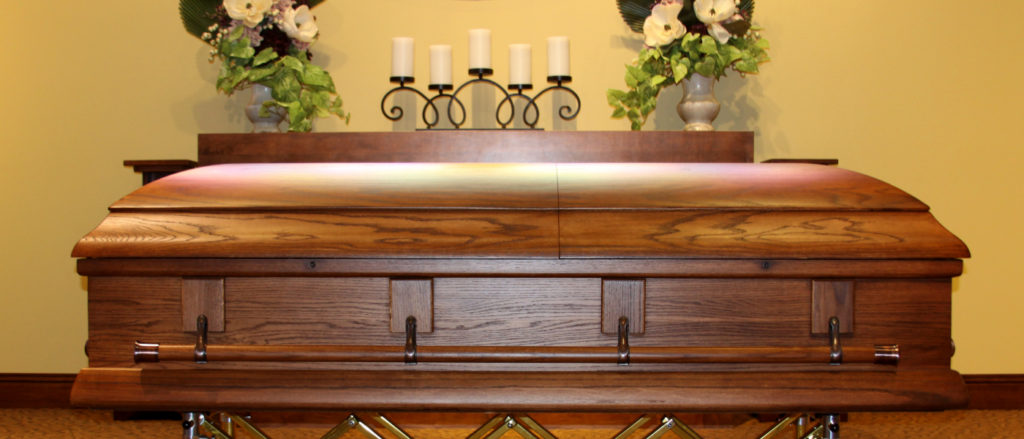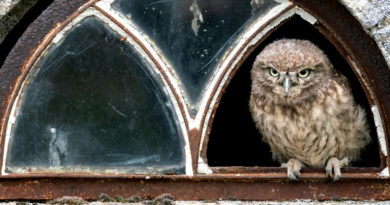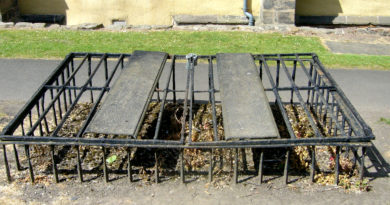The Difference: Split- vs. Full-Couch Casket

During a funeral visitation, only the “head section” (on the left) is opened.
Photo opportunity courtesy of Mark Krause, president,
Krause Funeral Homes & Cremation Services, Inc. Photo © Chris Raymond
Unless you’ve arranged a funeral or burial for a loved one, or prearranged your own, you might know little about caskets and the many different styles, materials and options available these days. This article explains the features and key differences between a split-couch and full-couch casket, i.e., why some casket lids are split in half.
Split-Couch Caskets
This is the most familiar style of casket in the United States and likely the one you mentally picture when you hear the term “casket.” The lid of a split-couch casket consists of two separate, hinged pieces.
During a wake or open-casket visitation, only the “head section” (the left side of the casket in the photo above) is opened for viewing, revealing the upper half of the deceased’s body. Both sections of the casket’s lid open, however, to facilitate placement of the body within by funeral service professionals.
Split-couch caskets might also be referred to as a half-couch or cut-lid casket. While uncommon, a 3/4-couch casket also exists, within which the closed lower-lid section covers the deceased from roughly his or her knees down.
Full-Couch Caskets
While this casket style is generally less known, it definitely features in many funerals and burials in the United States, particularly in some areas of Ohio, Pennsylvania and New York. The lid of a full-couch casket comprises a single piece, usually hinged. (Technically, a coffin is also full-couch since opening or removing its lid reveals the deceased’s entire body.) When the lid of a full-couch casket is opened, the deceased’s entire body is visible.
Why the Difference?
The reason explaining why full-couch and split-couch caskets exist has been lost to time (assuming there was ever a single explanation). Some insist that half-couch versions grew in popularity in the 20th century to facilitate the rise of open-casket viewing of the deceased during a wake/visitation, mirroring the growth of funeral parlors and funeral homes. Others believe that full-couch caskets are preferred when the funeral/disposition services will not involve viewing the deceased, i.e., a closed-casket service.
The truth is that neither a split- or full-couch casket precludes an open- or closed-casket funeral service. The decision to view the casketed deceased or not rests entirely with the immediate family, and both styles can accommodate this type of service. In fact, some full-couch caskets even feature an inner all-glass lid that can cover the deceased head-to-foot with the outer lid open. Other full-couch models offer an “inner foot panel” that effectively functions like the lower half of a split-couch casket lid by covering the deceased to his or her waist while the lid remains open.
Ultimately, the choice to use a full- or split-couch caskets is yours, based on your preferences and/or regional tradition. Most casket manufacturers offer full-couch caskets in a variety of styles and materials (such as wood or metal). Regardless of where you live, you should ask your funeral provider about availability even if you don’t see one shown in a casket display room, catalog or listed on a funeral home’s “Casket Price List.”







